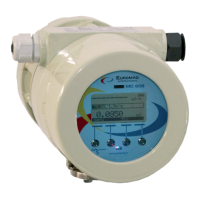Manufacturer’s design and safety statement
• Responsibility for the choice of lining and electrode materials in regards to abrasion and corrosion
resistance lies with the purchaser. The effect of any change in fluid process during the operation of the
device must be taken into account. Incorrect selection of lining and/or electrode could lead to a failure
of the device.
• While designing the device stresses and loads possibly caused by earthquakes, traffic, strong winds and
fire damage were not taken into account.
• Do not install the device so that it acts as a focus for pipeline stresses. In the configuration of the device
please take into account any external loads.
• During operation do not exceed the pressure and/or temperature ratings indicated on the nameplate or
in this Operating Manual.
Battery Operation:
• Lithium batteries are primary power sources with high energy content. They are designed to meet the
highest possible safety standards. They may, however, pose a potential hazard if they are misused either
electrically or mechanically which may cause the generation of excessive heat and possible breakage
of the cell.
Thus the following basic precautions should be observed when handling and using lithium batteries:
- Do not short-circuit, recharge, overcharge or connect with incorrect polarity
- Do not expose to temperature beyond the specified temperature range or incinerate the battery
- Do not crush, puncture or open cells or disassemble battery packs
- Do not weld or solder to the body of the battery, or the battery packs
- Do not expose contents to water
Lithium batteries are regulated under United Nations Model Regulations on Transport of Dangerous goods
(UN document on transport of hazardous goods), UN ST/SGAC document. 10-1, 12th revised edition, 2001.
The UN document No. 3091
Class 9 covers the lithium batteries packed with the equipment or inserted into it. The UN document No.
3090 Class 9 only covers the transport of the batteries themselves.
Thus the following basic precautions should be followed when transporting lithium batteries:
- Transport only in special packaging with special labels and transportation documents.
- Use caution in handling, transporting and packaging in order to prevent short circuiting of the batteries.
- The gross mass of the package is limited according to the type of transportation. In general, a gross
mass of less than 5 kg is acceptable for all forms of transport
- The batteries comply with the requirements set out in “UN Manual of tests and criteria, Part III,
subsection 38.3” for transport by air and with the provisions of the ADR regulations for the transport by
truck/sea.
• Remove the battery from the transmitter before returning the flow meter to Euromag International for
possible service or warranty claim.

